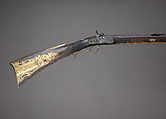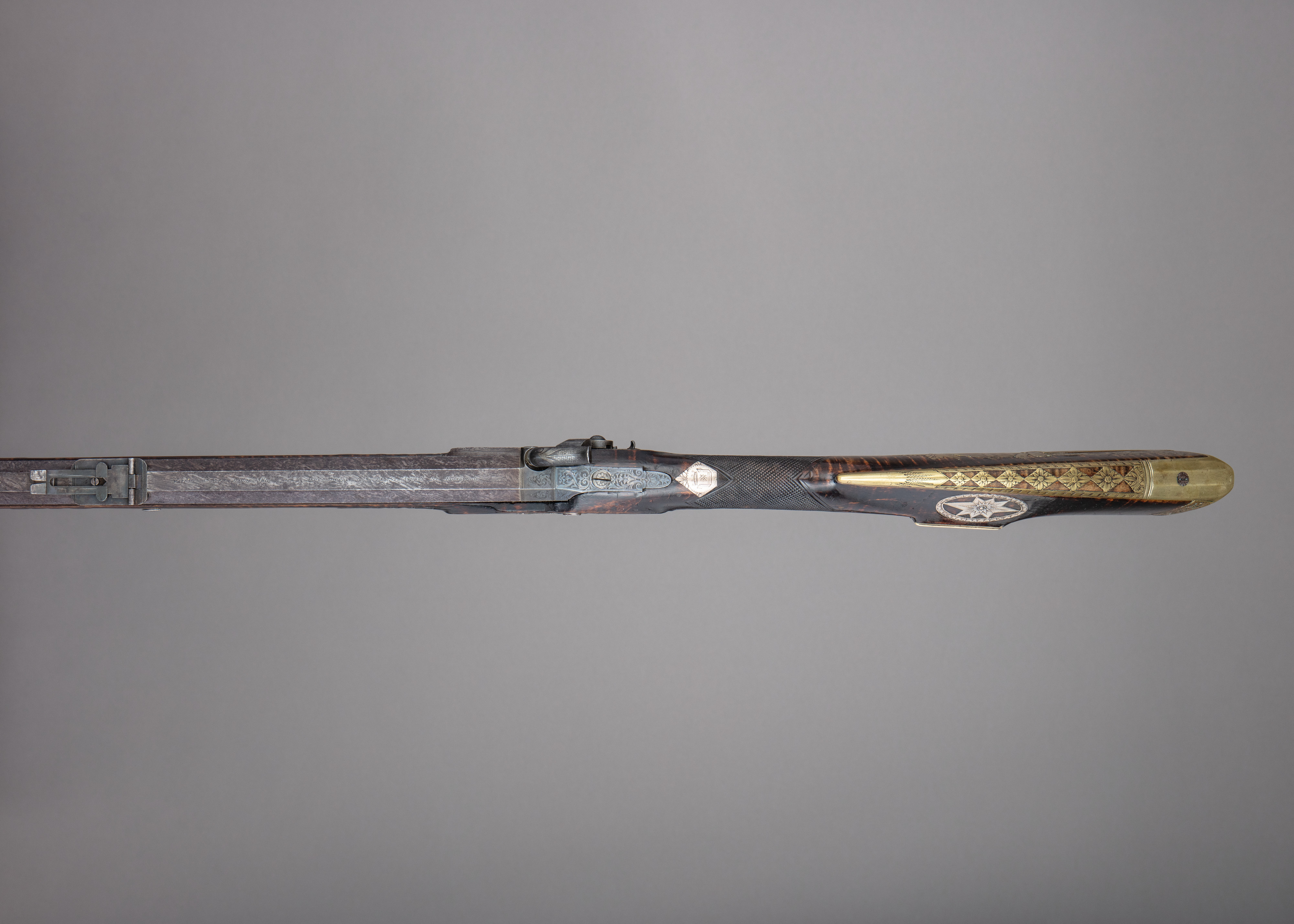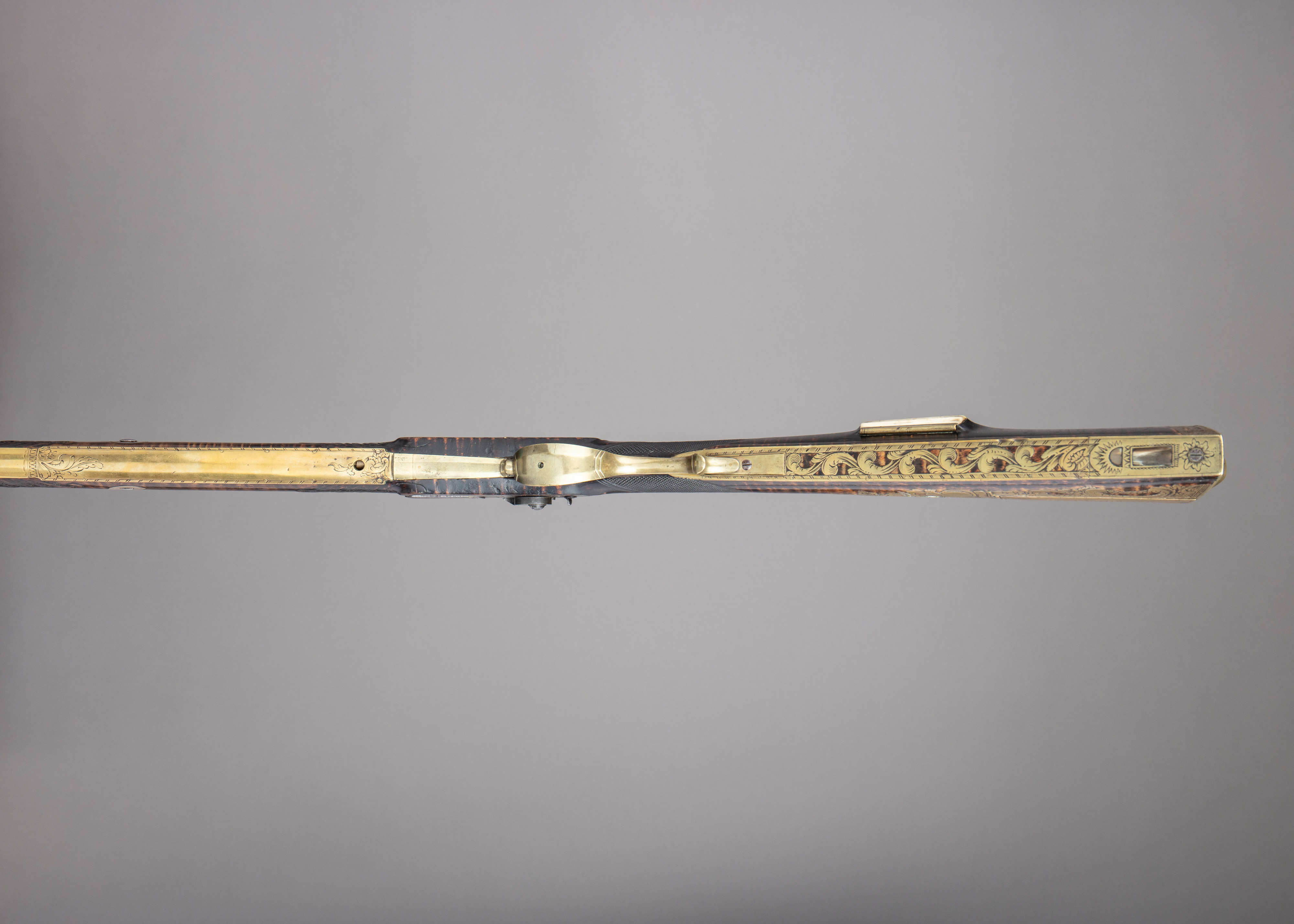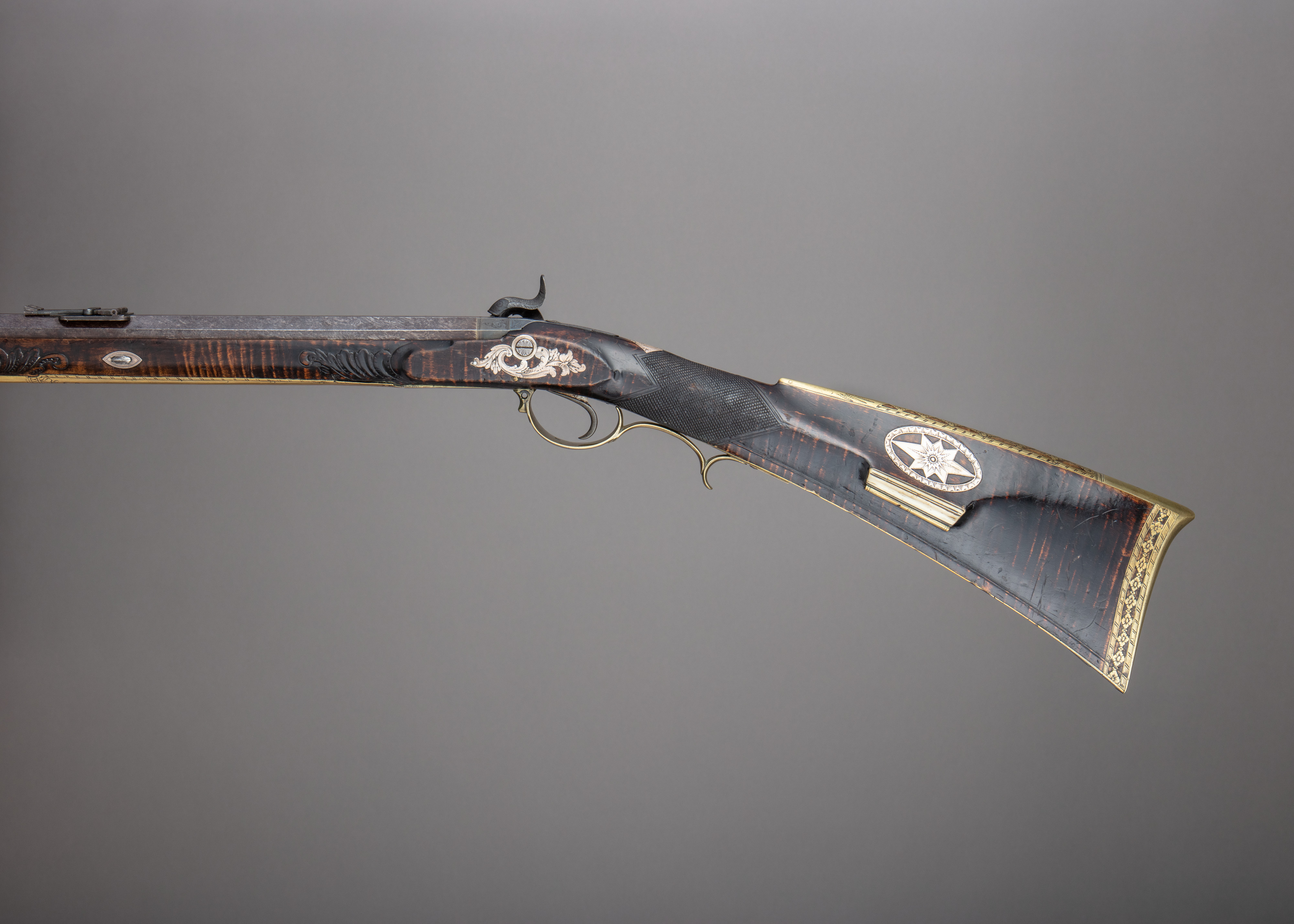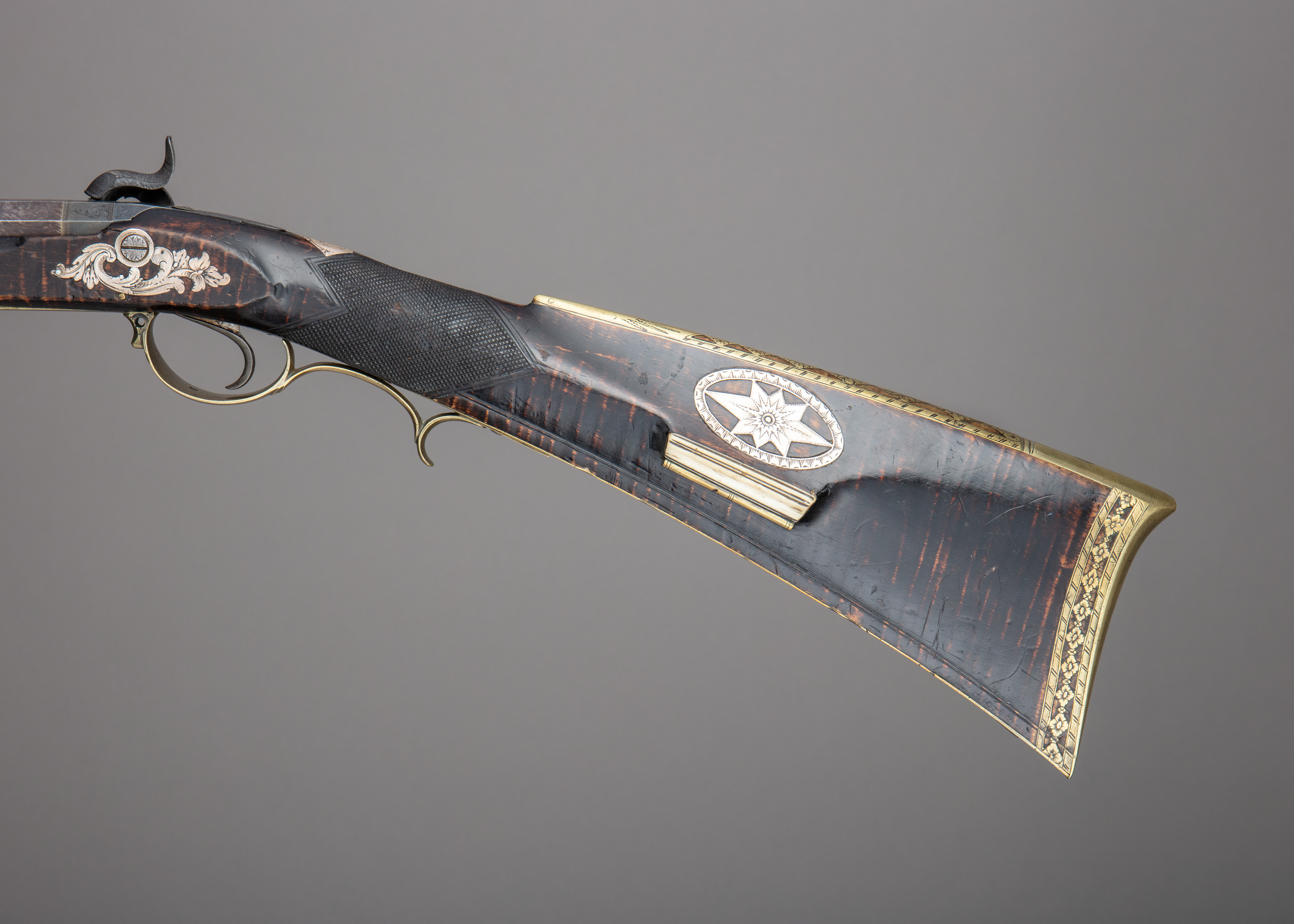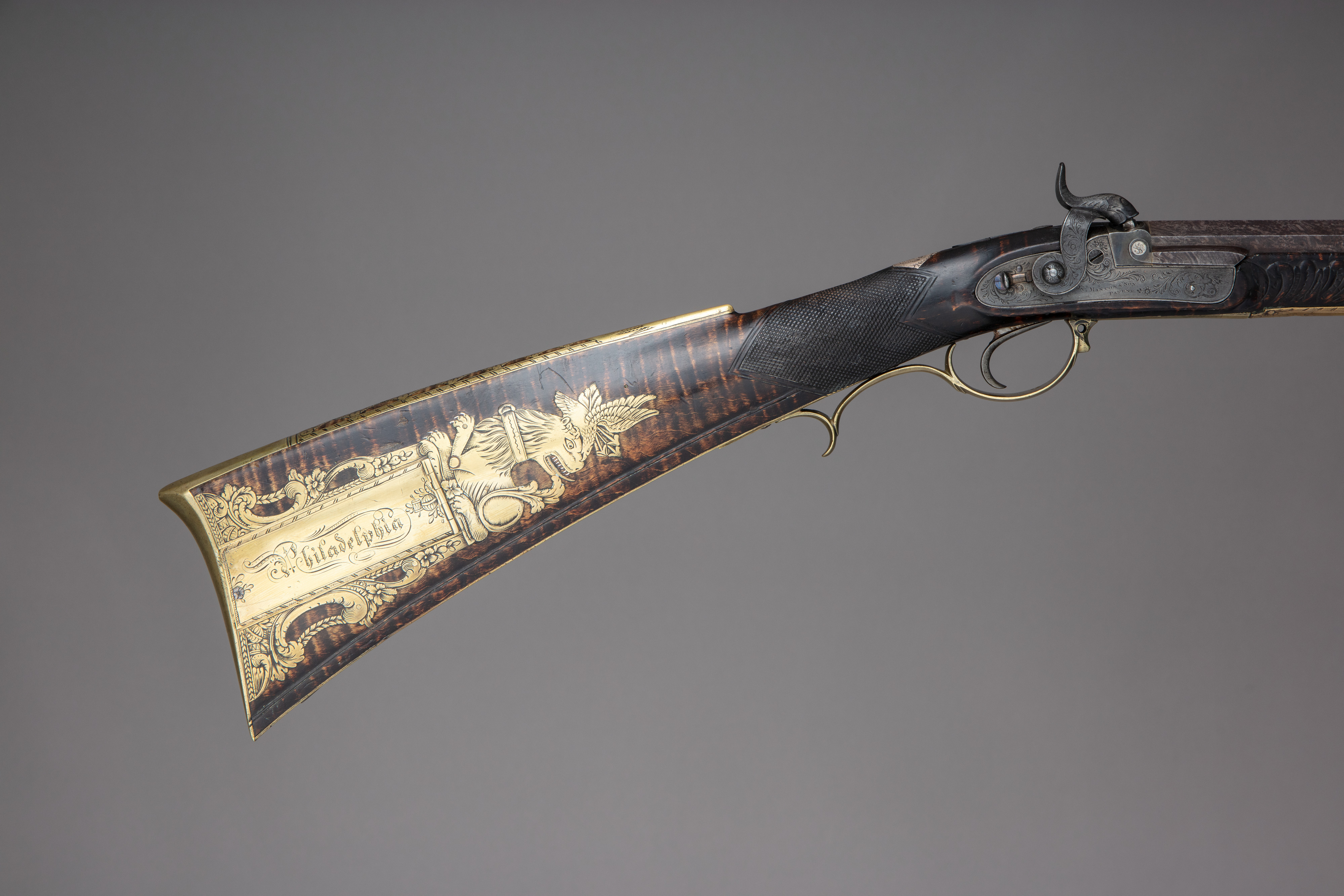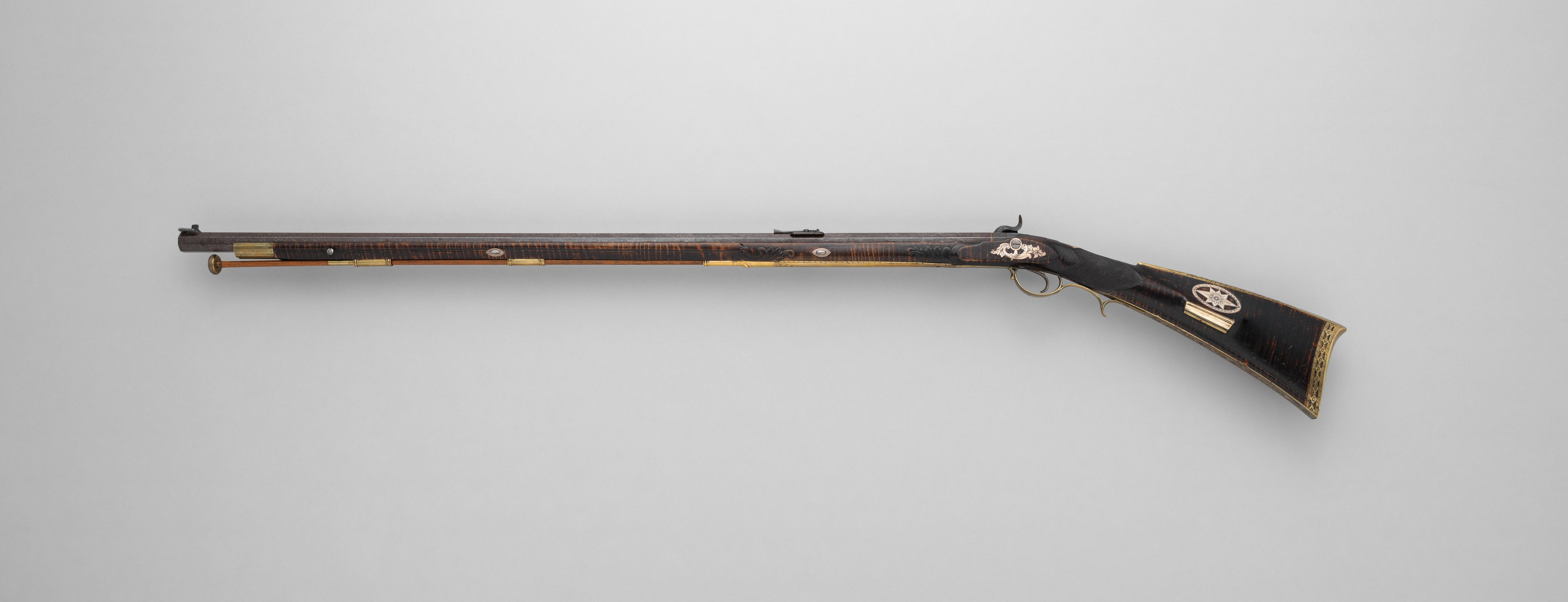Percussion Longrifle Converted to a Target Rifle
Attributed to Jacob Kuntz American
Lock maker John Manton & Son
Barrelsmith Alexander Henry British, Scottish
Not on view
Of the many talented American gunsmiths working in the late eighteenth and early nineteenth century, during what is often called the golden age of the Kentucky rifle, Jacob Kuntz (1780–1876) is arguably the most versatile, inventive, and artistically accomplished. In a career spanning several decades, Kuntz successively mastered riflemaking in the style of rural folk art, sophisticated American Rococo, and refined British sporting arms. This percussion rifle, which bears the coat of arms of the British nobleman George John Warren, fifth Baron Vernon (1803–1866), shows Kuntz’s creativity as a designer and talents as an engraver at their best. It is an excellent counterpoint to the Museum’s earlier rifle by Kuntz (acc. no. 42.22), which is a beautiful expression of the Lehigh Valley style in which he was trained. The earlier rifle was probably made about 1810, around the time he moved from rural Northampton County to Philadelphia; and the Vernon rifle approximately two decades later, when Kuntz was firmly established as a leading gunmaker in what was then the second largest city in the nation.
Although the percussion rifle was later modified at least once in the UK for Baron Vernon, the architecture of its curly maple stock, and its elaborate and skillfully engraved brass and silver fittings nevertheless represent some of Kuntz’s finest known work from his long tenure in Philadelphia. The form and lines of the gunstock reflect Kuntz’s roots in Northampton County. This is particularly evident in the graceful downward curve of the shoulder stock, which is a subtly streamlined version of a characteristic Northampton County type.
The outer side of the shoulder stock showcases the most prominent, original, and appealing feature of the rifle: its pierced and engraved brass patch box depicting an eagle perched on the head of a sitting lion, probable allusions to America and Britain, with the word "Philadelphia" inscribed in flowing calligraphy on the hinged lid below the lion. A brass patch box with a hinged lid is one of the defining characteristics of a Kentucky rifle. First developed in Pennsylvania about 1770 and initially a purely practical fitting, the metal patch box functions as a handy and secure place to keep the greased circular patches of cloth that were used to seat a lead ball more tightly when loading a rifle of this type. Plain and utilitarian to start, patch boxes soon developed decorative flourishes and elaborations, varying widely depending on the taste and purse of the person commissioning a rifle and the imagination and skill of the gunsmith who made it. Among the many designs that appear on patch boxes, figural ornament, in the form of people or animals, is the least common. Most often when figural designs do occur they are rendered in relatively simple styles, little more than silhouettes with engraved highlights. The patch box on the Vernon rifle is therefore all the more extraordinary for its highly accomplished depiction of an eagle and lion rendered as a caricature of Anglo-American relations. This together with the pierced ornamental framing of the lid, and the lavish lettering on it naming the gunsmith’s adopted city, combine to create a distinctively beautiful patch box.
The rifle is equipped with a finely made lock by John Manton, a top London gunmaker of the period. Since by the 1830s Kuntz was also producing English-style percussions shotguns, it is possible that he imported this lock and fitted it to the rifle himself. The rifle was modified in 1862 for Baron Vernon when its original barrel was replaced with a new one made by Alexander Henry of Edinburgh, one of the foremost Scottish gunsmiths of his generation. Combining the work of three great gunsmiths, this rifle was highly valued from the time of its initial creation in Philadelphia through its ensuing use as a target rifle decades later. A silver escutcheon or thumb plate inlaid in the stock at the top of the wrist is engraved with the Vernon coat of arms surrounded by their motto: VERNON SEMPER VIRET.
Due to rights restrictions, this image cannot be enlarged, viewed at full screen, or downloaded.
This artwork is meant to be viewed from right to left. Scroll left to view more.
